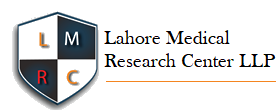Estimation of Lipid Profile in CCl4 Induced Toxicity in Albino Rats
Lipid Profile in CCl4 Induced Toxicity in Albino Rats
DOI:
https://doi.org/10.54393/mjz.v4i02.73Keywords:
Lipid Profile, CCl4, Induced Toxicity, Albino RatsAbstract
The combination of chlorine and chloroform in the presence of light produces carbon tetrachloride (CCl4), a colorless, volatile, non-inflammable liquid. It is a clear liquid with a sweet odor that can be perceived at low levels and does not occur naturally. It poses a significant hazard to one's health and is also one of the leading sources of toxicity in critical organs such as the lungs, kidneys, liver, and brain. Objectives: To determine the lipid profile with CCl4-induced in albino rats. Methods: The research was conducted at the University of Okara, Department of Zoology. The experiment was conducted at the animal home of the Department of Zoology, University of Okara. Albino Rats were the intended targets. There were two groups created: a control group and an experimental group. To test the harmful effect on the lipid profile, the rats were fed 30 per cent diluted carbon tetrachloride, with normal saline as a control group. This was accomplished through a 12-day trial. Sampling or dissection was done after 12 days to determine serum Total Cholesterol, Triglycerides, high-density lipoprotein (HDL), and low-density lipoprotein (LDL). Rats were dissected, and their hearts were punctured to obtain a blood sample and organs. After sampling was taken by puncturing the Rats' hearts, the samples were examined by a machine called Micro-Lab 300. Results: Total Cholesterol, Triglycerides, HDL, and LDL levels were higher than usual. Conclusions: The study indicated that CCl4 has a toxic effect on the lipid profile of rats.
References
Teschke R. Liver injury by carbon tetrachloride intoxication in 16 patients treated with forced ventilation to accelerate toxin removal via the lungs: A clinical report. Toxics. 2018 Apr; 6(2): 25. doi: 10.3390/toxics6020025.
Slater TF, Cheeseman KH, Ingold KU. Carbon tetrachloride toxicity as a model for studying free-radical mediated liver injury. Philosophical Transactions of the Royal Society of London. B, Biological Sciences. 1985 Dec; 311(1152): 633-45. doi: 10.1098/rstb.1985.0169.
Manno M, Rezzadore M, Grossi M, Sbrana C. Potentiation of occupational carbon tetrachloride toxicity by ethanol abuse. Human & experimental toxicology. 1996 Apr; 15(4): 294-300. doi: 10.1177/096032719601500404.
Boll M, Lutz WD, Becker E, Stampfl A. Mechanism of carbon tetrachloride-induced hepatotoxicity. Hepatocellular damage by reactive carbon tetrachloride metabolites. Zeitschrift Für Naturforschung C. 2001 Aug; 56(7-8): 649-59. doi: 10.1515/znc-2001-7-826.
Brattin WJ, Glende Jr EA, Recknagel RO. Pathological mechanisms in carbon tetrachloride hepatotoxicity. Journal of Free Radicals in Biology & Medicine. 1985 Jan; 1(1): 27-38. doi: 10.1016/0748-5514(85)90026-1.
Teschke R. Liver injury by carbon tetrachloride intoxication in 16 patients treated with forced ventilation to accelerate toxin removal via the lungs: A clinical report. Toxics. 2018 Apr; 6(2): 25. doi: 10.3390/toxics6020025.
Stoyanovsky DA and Cederbaum AI. Metabolism of carbon tetrachloride to trichloromethyl radical: An ESR and HPLC-EC study. Chemical Research in Toxicology. 1999 Aug; 12(8): 730-6. doi: 10.1021/tx9900371.
Patterson PB and Suszko IM. On antibody content and rate of glycine-c14 inclusion into antibodies. AE Gurvich and NP Smirnova. (Inst. Biol. and Med. Chem. Acad. Med. Sci. USSR, Moscow). Biokhimiya 22, 626-35 (1957). CA-52-4805f. Radioisotopes in the Biological Sciences: An Annotated Bibliography of Selected Literature. 1967; 3585: 40.
Weber LW, Boll M, Stampfl A. Hepatotoxicity and mechanism of action of haloalkanes: carbon tetrachloride as a toxicological model. Critical Reviews in Toxicology. 2003 Jan; 33(2): 105-36. doi: 10.1080/713611034.
Kull Jr FC and Cuatrecasas P. Possible requirement of internalization in the mechanism of in vitro cytotoxicity in tumor necrosis serum. Cancer Research. 1981 Dec; 41(12_Part_1): 4885-90.
Tahashi Y, Matsuzaki K, Date M, Yoshida K, Furukawa F, Sugano Y, et al. Differential regulation of TGF‐β signal in hepatic stellate cells between acute and chronic rat liver injury. Hepatology. 2002 Jan; 35(1): 49-61. doi: 10.1053/jhep.2002.30083.
Moon HD. The pathology of fatal carbon tetrachloride poisoning: with special reference to the histogenesis of the hepatic and renal lesions. The American Journal of Pathology. 1950 Nov; 26(6): 1041.
Dawborn JK, Ralston M, Weiden S. Acute carbon tetrachloride poisoning. British Medical Journal. 1961 Aug; 2(5250): 493. doi: 10.1136/bmj.2.5250.493.
Cowger ML. Bilirubin encephalopathy. In Biology of Brain Dysfunction: Volume 2 1973 2(265-293). Boston, MA: Springer US. doi: 10.1007/978-1-4684-2670-0_7.
Yilmaz KU, Ercisli S, Zengin Y, Sengul M, Kafkas EY. Preliminary characterisation of cornelian cherry (Cornus mas L.) genotypes for their physico-chemical properties. Food Chemistry. 2009 May; 114(2): 408-12. doi: 10.1016/j.foodchem.2008.09.055.
Wiss DA and Waterhous TS. Nutrition therapy for eating disorders, substance use disorders, and addictions. Eating disorders, addictions and substance use disorders: Research, Clinical and Treatment Perspectives. 2014: 509-32. doi: 10.1007/978-3-642-45378-6_23.
Boll M, Weber LW, Becker E, Stampfl A. Hepatocyte damage induced by carbon tetrachloride: inhibited lipoprotein secretion and changed lipoprotein composition. Zeitschrift Für Naturforschung C. 2001 Apr; 56(3-4): 283-90. doi: 10.1515/znc-2001-3-419.
Althnaian T, Albokhadaim I, El-Bahr SM. Biochemical and histopathological study in rats intoxicated with carbontetrachloride and treated with camel milk. Springer Plus. 2013 Dec; 2(1): 1-7. doi: 10.1186/2193-1801-2-57.
Abdel-Moneim AM, Al-Kahtani MA, El-Kersh MA, Al-Omair MA. Free radical-scavenging, anti-inflammatory/anti-fibrotic and hepatoprotective actions of taurine and silymarin against CCl4 induced rat liver damage. Plos One. 2015 Dec; 10(12): e0144509. doi: 10.1371/journal.pone.0144509.
Fernandez ML and West KL. Mechanisms by which dietary fatty acids modulate plasma lipids. The Journal of Nutrition. 2005 Sep; 135(9): 2075-8. doi: 10.1093/jn/135.9.2075.
Turner TT, Lysiak JJ. Oxidative stress: a common factor in testicular dysfunction. Journal of Andrology. 2008 Sep; 29(5): 488-98. doi: 10.2164/jandrol.108.005132.
Hsu YW, Tsai CF, Chen WK, Lu FJ. Protective effects of seabuckthorn (Hippophae rhamnoides L.) seed oil against carbon tetrachloride-induced hepatotoxicity in mice. Food and Chemical Toxicology. 2009 Sep; 47(9): 2281-8. doi: 10.1016/j.fct.2009.06.015.
Marimuthu S, Adluri RS, Rajagopalan R, Menon VP. Protective role of ferulic acid on carbon tetrachloride-induced hyperlipidemia and histological alterations in experimental rats. Journal of Basic and Clinical Physiology and Pharmacology. 2013 Feb; 24(1): 59-66. doi: 10.1515/jbcpp-2012-0053.
Islam MR, Parvin MS, Islam ME. Antioxidant and hepatoprotective activity of an ethanol extract of Syzygium jambos (L.) leaves. Drug Discoveries & Therapeutics. 2012 Aug; 6(4): 205-11. doi: 10.5582/ddt.2012.v6.4.205.
HONMA T. Effects of trichloroethylene, 1, 1, 1-trichloroethane and carbon tetrachloride on plasma lipoproteins of rats. Industrial Health. 1990; 28(4): 159-74. doi: 10.2486/indhealth.28.159.
Uddin ME, Chowdhury MA, Rahman MA, Islam AM, Islam MR. Antioxidants and Total Phenolics of Ludwigia repens rubin Partially Improve the Hepatic Damage Induced by Carbon Tetra Chloride in Animal Model. Bioresearch Communications-(BRC). 2015; 1(2): 76-81.
Shahzadi T, Abbasi MA, Ur-Rehman A, Riaz T, Khan KM, Ashraf M, et al. Antioxidant and lipoxygenase inhibiting new iridoid glucosides from Caryopteris odorata. Natural Product Research. 2013 Mar; 27(4-5): 302-13. doi: 10.1080/14786419.2012.668692.
Downloads
Published
How to Cite
Issue
Section
License
Copyright (c) 2023 MARKHOR (The Journal of Zoology)

This work is licensed under a Creative Commons Attribution 4.0 International License.
This is an open-access journal and all the published articles / items are distributed under the terms of the Creative Commons Attribution License, which permits unrestricted use, distribution, and reproduction in any medium, provided the original author and source are credited. For comments editor@markhorjournal.com











